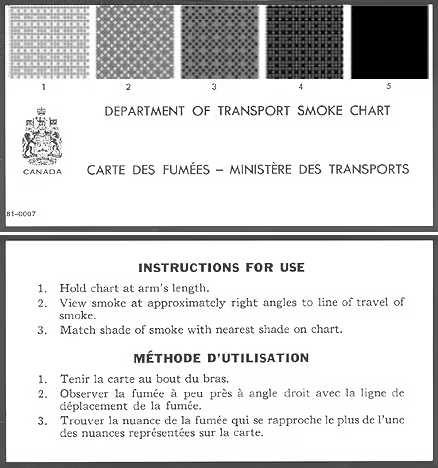Canada: Marine Engines
- Regulatory Authority
- Emission Control Areas
- NOx Emissions
- SOx Emissions
- Smoke
- Marine Spark Ignition Engines
Regulatory Authority
Authority to regulate emissions from marine propulsion engines less than 37 kW falls to Environment and Climate Change Canada through the Off-Road Compression-Ignition Engine Emission Regulations.
Emission standards from ships are under the authority of Transport Canada which has the authority to regulate emissions from marine propulsion engines rated at 37 kW and higher. The Vessel Pollution and Dangerous Chemicals Regulations [6351] of the Canada Shipping Act 2001 [6352] regulates NOx, SOx and black smoke from ships operating in Canadian waters.
Emission Control Areas
Starting 2015.01, Canada’s east and west coasts were incorporated into the North American Emission Control Area (ECA) under IMO MARPOL 73/78 Annex VI. The North American ECA also includes the Great Lakes and St. Laurence River that are accessed by international shipping. Canada’s arctic waters including Hudson Bay, James Bay and Ungava Bay have also been designated as an ECA. While the latter will apply to vessels with keel laid on or after 2025.01.01, the amendments to MARPOL Annex VI that define this area will take effect 2026.03 and they will start to be enforced 2027.03 [6353][6354].
Both ECAs require vessels subject to MARPOL Annex VI to limit fuel sulfur to 0.1% and meet the Tier III NOx requirements provided the vessel’s keel was laid on or after 2026.01 for the North American ECA and on or after 2025.01 for the Canadian Arctic ECA.
NOx Emissions
The Vessel Pollution and Dangerous Chemicals Regulations align with IMO MARPOL 73/78 Annex VI. This agreement sets limits for NOx emissions from marine engines with power outputs more than 130 kW that have either been installed on a ship constructed on or after January 1, 2000 or have had major conversions on or after January 1, 2000.
Some flexibilities are available for vessels that operate only in Canadian waters. These include the application of Tier I requirements to vessels constructed starting in 2007 and an exemption from Tier III requirements for vessels under 15 m in length. The latter only need to meet Tier II requirements until at least the end of 2027 [6355].
SOx Emissions
The fuel sulfur limits for vessels operating in Canadian waters also align with those of MARPOL Annex VI. The maximum sulfur content of ship fuel oil is summarized in Table 1.
| Date | Limit | Applicable Region |
|---|---|---|
| Prior to 2020.01 | 3.50% | Canadian arctic waters |
| 2020.01 | 0.50% | |
| 2027.03 | 0.10% (Arctic ECA) | |
| Prior to 2015.01 | 1.00% | Canadian waters other than arctic waters |
| 2015.01 | 0.10% (North American ECA*) | |
| * for the Great Lakes and St. Laurence River, the sulfur limit was phased in to 0.10% by 2020.01 | ||
Smoke
The density of black smoke from ships in Canadian waters and within 1 mile of land is regulated. The smoke density rating is determined by the Department of Transport Smoke Chart set out in the schedule of the regulations and reproduced below. For vessels with diesel engines, a smoke density less than No. 1 is normally required with the exception that a smoke density of No. 2 for an aggregate of not more than 4 minutes in any 30-minute period is allowed.

Marine Spark Ignition Engines
Emissions from marine spark ignition engines are regulated by the Marine Spark-Ignition Engine, Vessel and Off-road Recreational Vehicle Emission Regulations (SOR/2011-10) [3526]. This regulation applies to outboard engines, inboard engines and personal watercraft engines and aligns the emission requirements with the US EPA.